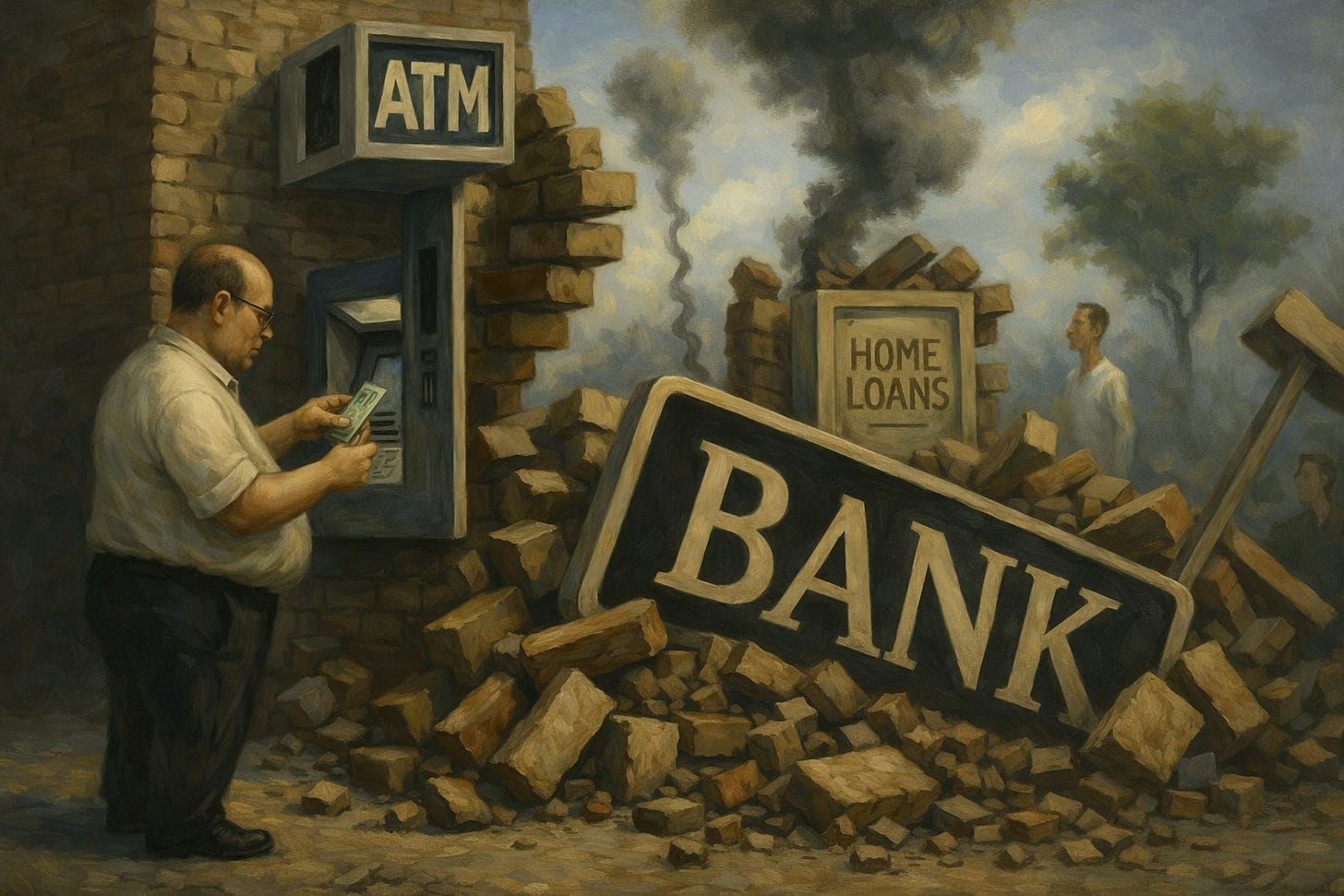Overleveraged, Worse Than 2008
A shrinking middle and a polarized credit system.
America's average FICO is 715. The real story is drift and fracture: the middle is thinning out, delinquencies are climbing back to late-2000s territory, and a policy boomerang just kneecapped millions of young borrowers.
Two years ago the average was 718; now it's 715. That's the second straight annual drop after a decade of gains.
Meanwhile, the middle of the distribution shrunk from 38.1% in 2021 to 33.8% in 2025. The tails fattened: more high scores at the top, more disasters at the bottom.
If you're managing risk off the average, you're flying blind.
Then February 2025 hit. Student-loan delinquencies started hitting credit files again for the first time in nearly five years.
6.1 million people who picked up a delinquency saw an average 69-point hit. A quarter dropped 100+ points.
By Q2 2025, 10.2% of the nation's $1.64T student-loan pile was 90+ days delinquent.
Gen Z ate the blast first. About 34% have student loans compared to 17% for everyone else. Fourteen percent of Gen Z saw a 50-point score drop over the last year.
Households are getting squeezed: prices stayed sticky, rates jumped, borrowing costs followed. Total household debt hit $18.39T. Credit-card balances reached $1.21T.
That resilience you hear about? It lives with people who own homes and stocks. If you rent and finance life at today's rates, this is a slow bleed.
Auto loans, credit cards, and personal loans are at their highest delinquency levels since 2009. Auto is the standout mess: 60+ day delinquency has surpassed Great Recession levels.
Here's the shift that should set off sirens: Americans are now 19% more likely to pay the car on time than the mortgage.
The car is a paycheck umbilical. Lose it and you lose income. Student loans rank dead last.
Used-vehicle prices jumped 5.7% from September 2024 to August 2025. Auto loan terms pushed back toward 66 months. Despite a larger population, monthly vehicle sales run below pre-COVID levels.
Property values sit above their pre-2008 peak. Households overpay for depreciating assets to protect access to appreciating ones they can't buy.
Young borrowers are getting hit with triple-digit point drops as the student-loan shield dissolves.
The policy cocktail lifted asset owners while the bottom third pays 20% rates on groceries routed through revolving credit. A K-shaped economy that rewards balance sheets and punishes cash flow.
What does that leave us?
Averages that lull, distributions that scream. A car-first payment hierarchy. A generation pushed off a cliff when forbearance turned into delinquency bombs. A housing market that looks healthy because yesterday's borrowers locked yesterday's rates.
This isn't 2008. It's stranger. The system works until a real shock arrives and households torch savings, sell what they can, miss what they can't.
Sleep on average 715 if you want. Just don't say you weren't warned when the floor gives way.



2008 was horrible. If it happens again, the current admin will not help the middle one iota.